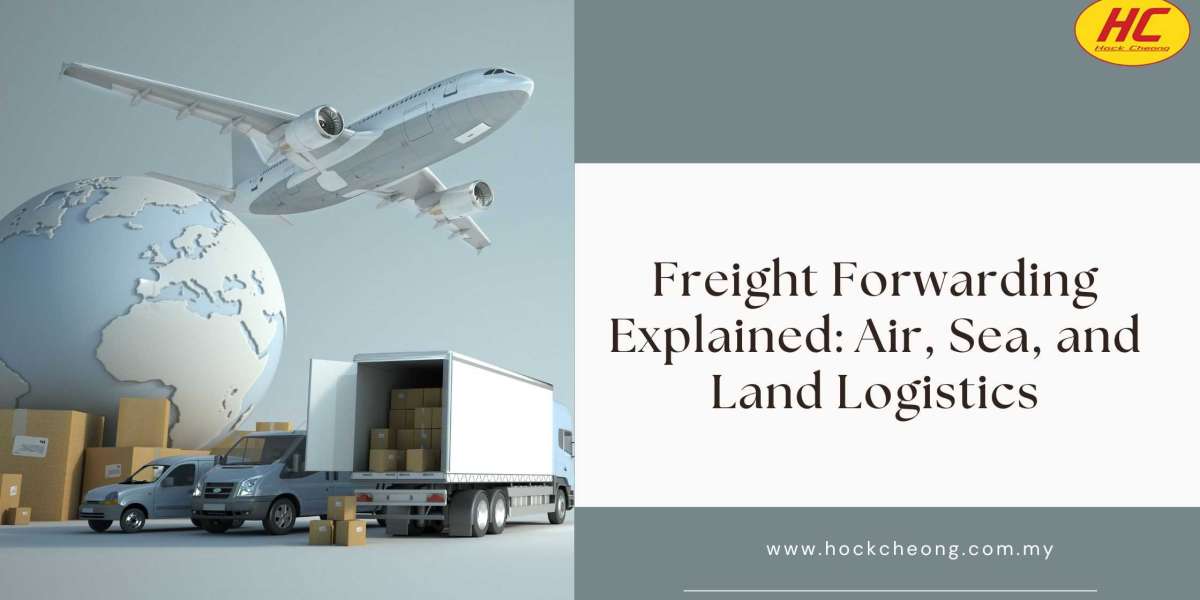What is Freight Forwarding?
Freight forwarding is the process of coordinating and managing the shipment of goods from one location to another. Freight forwarders are the experts who plan this journey. They don’t move the cargo themselves but work with carriers—airlines, shipping lines, and trucking companies—to ensure smooth, efficient delivery.
Think of them as travel agents for your cargo. They handle everything from documentation and customs clearance to route planning and cargo insurance, making the complex world of international logistics easier for businesses to navigate.
Air Freight: Speed and Efficiency
Air freight is the fastest mode of transporting goods over long distances. It's ideal for time-sensitive shipments, high-value items, and perishable goods like flowers, electronics, or pharmaceuticals.
Key Benefits:
- Speed: Goods can travel across continents in a matter of hours or days.
- Security: Airports and airlines have tight security protocols, reducing the risk of loss or damage.
- Reliability: Flight schedules are usually more predictable compared to ocean or road transport.
Ideal For:
- Small, high-value items
- Urgent shipments
- Fragile or perishable goods
Challenges:
- Cost: Air freight is significantly more expensive than sea or land freight.
- Capacity Limits: There are strict weight and size restrictions.
Freight forwarders help optimize air freight by choosing the best airlines, managing transit times, and ensuring proper packaging and documentation.
Sea Freight: The Backbone of Global Trade
Sea freight is the most widely used mode of transport for international shipping, especially for bulky and heavy goods. Over 80% of global trade by volume moves by sea, making it the backbone of global commerce.
Key Benefits:
- Cost-Effective: Sea freight is the most economical option for large volumes.
- Large Capacity: It can accommodate oversized or heavy cargo that can't be shipped by air.
- Eco-Friendly: Ocean transport has a smaller carbon footprint per ton compared to air.
Ideal For:
- Heavy machinery
- Furniture
- Raw materials (like steel, oil, or grain)
Challenges:
- Slower Transit Times: Ocean freight can take weeks, depending on the distance and route.
- Port Delays: Congestion and customs procedures can add delays.
- Weather Dependency: Storms and rough seas can affect schedules.
Freight forwarders are crucial in sea logistics for consolidating cargo (especially in Less-than-Container Load shipments), handling port regulations, and choosing the best shipping routes and carriers.
Land Freight: The Final Mile and More
Land freight, which includes road and rail transport, plays a vital role in both domestic and international logistics. It’s essential for connecting inland locations to ports and airports and for regional trade.
Key Benefits:
- Flexible Routing: Trucks can reach remote or rural areas.
- Cost-Effective for Short Distances: Especially in cross-border or domestic transportation.
- Door-to-Door Service: Ideal for last-mile delivery.
Ideal For:
- Domestic or regional deliveries
- Cargo that needs to be picked up or dropped off at specific locations
- Container movement from ports to warehouses
Challenges:
- Traffic and Infrastructure Issues: Delays can occur due to road conditions or regulations.
- Environmental Impact: Trucks produce higher emissions than trains or ships.
- Customs Bottlenecks: Especially in cross-border land transport.
Freight forwarders coordinate trucking routes, handle cross-border documentation, and ensure cargo moves seamlessly between different transport modes.
The Power of Multimodal Logistics
Most freight journeys don’t rely on just one mode of transport. Instead, they use a combination—known as multimodal logistics. For example, goods may travel by sea from China to the U.S., be transferred to a train for inland distribution, and finally reach the customer by truck.
Freight forwarders play a key role in managing this complex chain. They ensure smooth transitions between modes, minimize delays, and manage the entire journey as a single shipment—reducing risk and simplifying tracking.
Why Use a Freight Forwarder?
Hiring a freight forwarder gives businesses:
- Expertise: They know the ins and outs of customs, regulations, and logistics networks.
- Time Savings: They handle paperwork and coordination, so businesses can focus on core operations.
- Risk Management: They plan for contingencies, manage insurance, and help recover lost shipments.
Whether you're a small business shipping your first pallet or a large enterprise moving thousands of containers, a freight forwarder is an indispensable partner.
Final Thoughts
Freight forwarding might seem like an invisible part of the global economy, but it's what keeps supply chains running and shelves stocked. From air's lightning speed to sea's massive capacity and land’s critical connections, understanding the modes of logistics helps businesses make informed shipping decisions.
By working with a reliable freight forwarder, companies can navigate the complexities of global trade with confidence, efficiency, and peace of mind.







